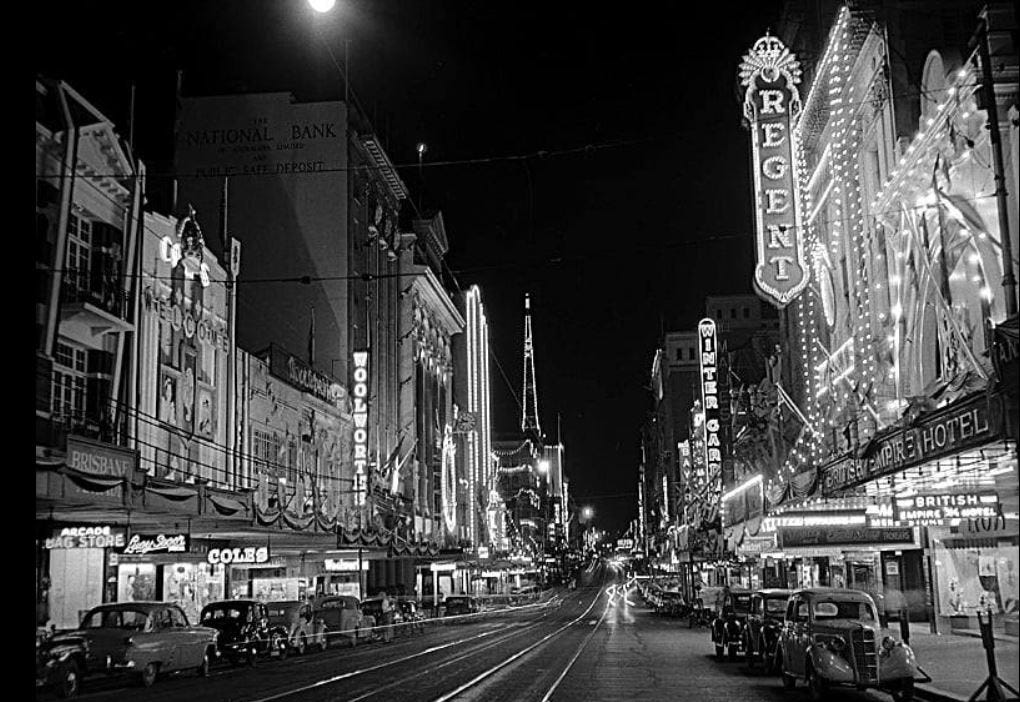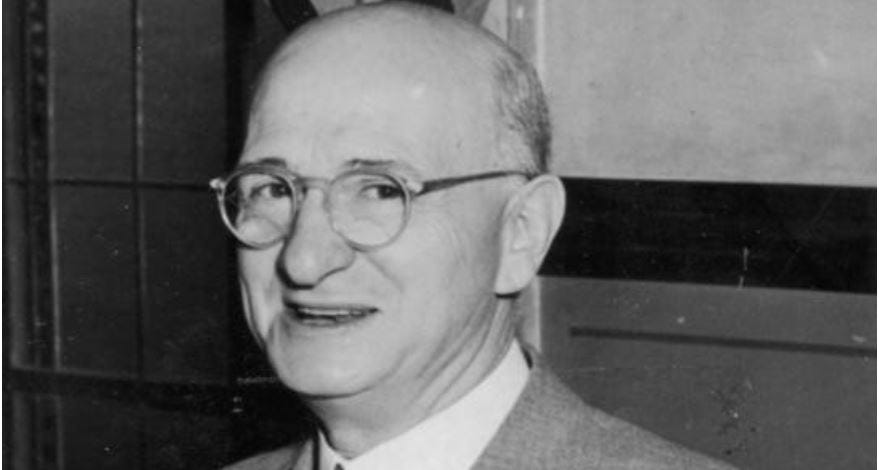As I may have mentioned before, I have a strong interest in the preservation of heritage buildings. Quite simply, I think we should think deeply, and have a broad community discussion, before we allow buildings to be demolished. In another life, I was involved in the unsuccessful “Save the Regent” campaign. (The Regent is pictured above in its hey-day.)
The issue came to mind again when I read this story about an unsuccessful bid to save the McLean grandstand at Ballymore. Now I don’t know much about the place, but I hope its demolition wasn’t allowed to go ahead because it was only built in the 1960s. We need to save buildings from all eras, including recent times, not just those that have had the good fortune to survive 100 years or more.
I’m not going to buy into this particular argument, but I thought it interesting to revisit the reasons taken into account when Queensland Heritage decides which buildings and other structures to protect.
The application guides for adding or removing items from the heritage register give some of those potential reasons:
a) The place is important in demonstrating the evolution or pattern of Queensland’s history.
b) The place demonstrates rare, uncommon or endangered aspects of Queensland’s cultural heritage.
c) The place has potential to yield information that will contribute to an understanding of Queensland’s history.
d) The place is important in demonstrating the principal characteristics of a particular class of cultural places.
e) The place is important because of its aesthetic significance.
f) The place is important in showing a high degree of creative or technical achievement at a particular period.
g) The place has a strong or special association with a particular community or cultural group for social, cultural or spiritual reasons.
h) The place has a special association with the life or work of a particular person, group or organisation of importance in Queensland’s history.
Can you think of anything that ought to be protected for one, or several of those reasons? I can tell you for free that feeling passionate won’t necessarily be enough to save a structure from the wrecking ball.
Tune in to the Mister Brisbane radio show on Reading Radio at 1296AM and on DAB+ in Brisbane at 6.30pm on Tuesday nights. It’s also available as a podcast. Just search for “Mister Brisbane” on your favourite player or follow this link.
RADIO DAYS
Further to my posts about radio callsigns, I was involved in a conversation about the origins of the Brisbane stations. I was relying on my memory then, but I’ve since done a bit more research (yes, I googled it). I thought 4BC stood for “Brisbane Chandler” because I knew the Chandler family was somehow involved. It seems though it’s “Beals Chandler” after John Beals Chandler, an electrical retailer who imported and sold radios and wanted to promote his business.
According to the State Library, Chandler started the station, initially known as WGT 4BC (with the WGT standing, I think, for Wintergarden Theatre, where it was based), in 1930. He became Lord Mayor of Brisbane in 1940 and served four terms until 1952. From 1943-47 he was also a Member of State Parliament and was knighted in 1952. Because Chandler also owned 4BH and a network of regional stations, he had to sell 4BC in 1937. The station has since gone through many different owners and format changes until becoming part of the Nine Radio Network last year.
I’ll tell the story of other Brisbane radio stations in future posts.
NAME GAME
I reckon The Stringy Mangoes would be a great name for a Brisbane band. Does anybody have a great Brizband name — real or imagined?
POWER PLAY
Iranian writer Nassim Soleimanpour’s White Rabbit, Red Rabbit — a play with no rehearsal, no director and a solo actor performing it as they read the script for the first time — is being performed around the world on March 13 to commemorate the day many theatres shut due to COVID restrictions. Andrea Moor will perform it at the Brisbane Powerhouse as a fundraiser for the Actors’ & Entertainers’ Benevolent Fund of Queensland. Details are here.
FEEDBACK
Regarding radio IDs, James writes: “there’s no requirement for radio stations to use their callsigns on air any more, incidentally. Nobody knows Nova is 4BNE, and ABC Radio Brisbane hasn’t used theirs for over 5 years. They’re a bit anachronistic but useful for smart speakers, oddly (since they’re unique).”
On the issue of whether 12am is midnight or noon, I consulted the Royal Museums of Greenwich, which knows about these things. Its website says the correct terms are 12 midnight and 12 noon and notes: “The abbreviation am stands for ante-meridiem (before the Sun has crossed the meridian lines) and pm stands for post-meridiem (after the Sun has crossed the meridian line). At 12 noon, the Sun is at its highest point in the sky and directly over the meridian. It is therefore neither ‘ante’ (am) nor ‘post’ (pm).”






